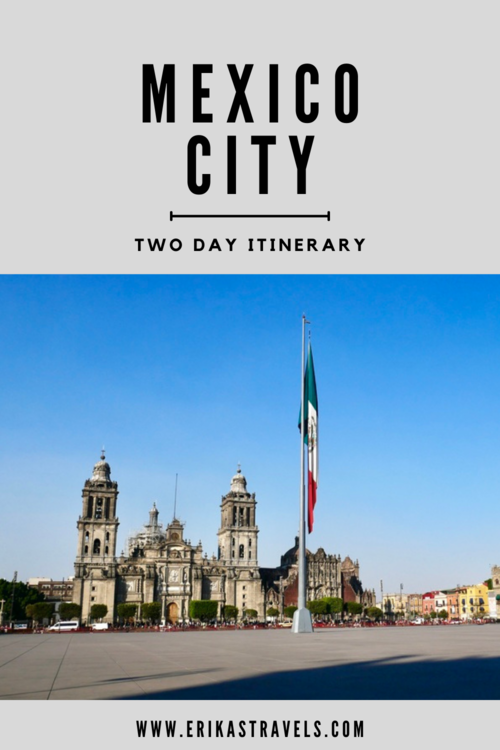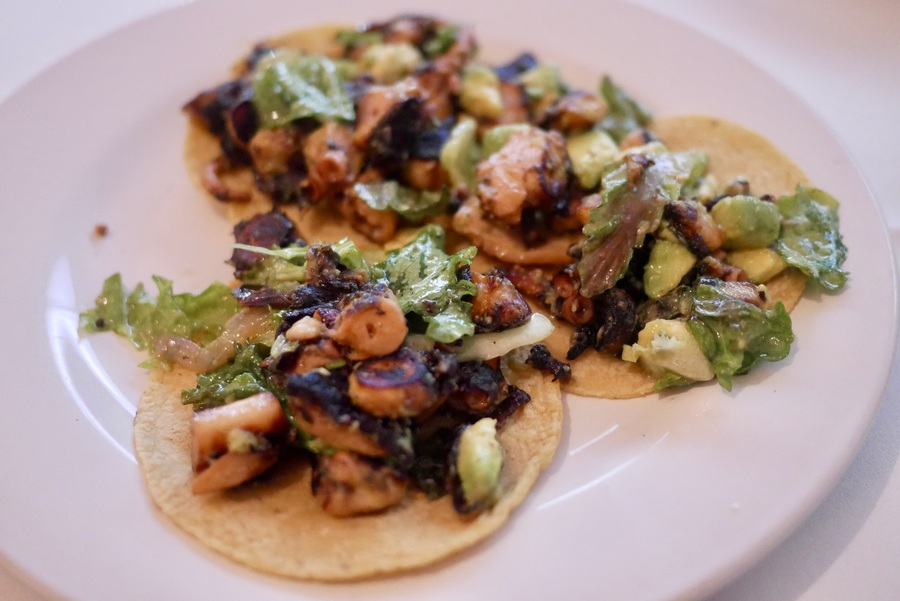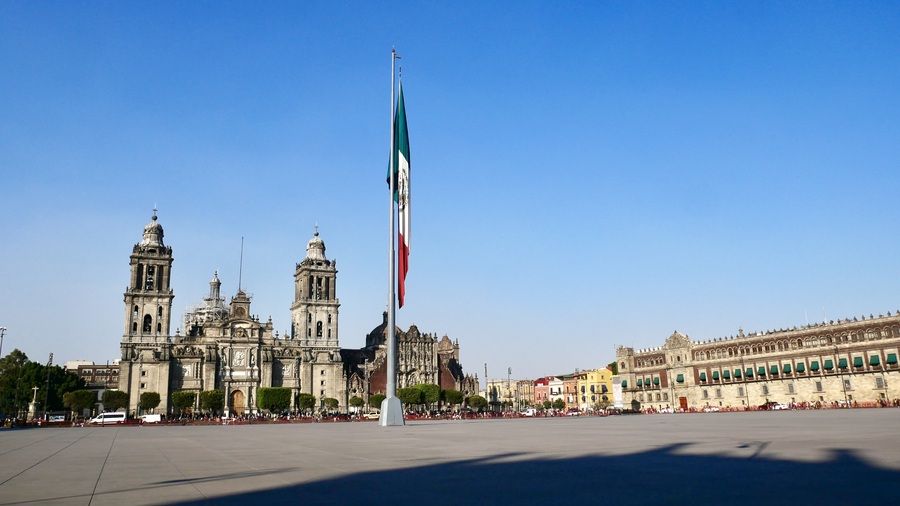
Mexico City Weekend Itinerary: Top Things to Do
Seemingly out of nowhere, Mexico City has become one of the world’s hottest travel destinations. The sprawling modern metropolis (also lovingly abbreviated to CDMX for Cuidad de Mexico) is a burgeoning magnet for lovers of food, culture, history, and architecture.
It is congested yet lively, chaotic yet beautiful. It is a city for city people. A place where you’ll find some of the best cultural, architectural and gastronomical attractions not only in Mexico, but in all of North America.
Things to Do with Two Days in Mexico City
While many travelers associate Mexico with the tourist resorts in Cancun, the beaches near Puerta Vallarta, and the parties in Cabo San Lucas, the massive capital city is the country’s beating heart.
Mexico City is huge. It is the fifth largest urban area in the world after Tokyo, New Delhi, Shanghai, and Sao Paulo. Mexico’s undisputed center of gravity, it is traffic-logged and vibrant and bursting at the seams.
Whether you want to visit museums, eat your weight in tacos, or do a historical deep dive into pre-Columbian cultures, CDMX has a little bit of something for everyone.
Day 1: The Essentials
Crafting the best two day Mexico City itinerary ultimately depends on your interests. The thriving urban center has a lot going on. And narrowing down a list of top things to do for a weekend visit can be tough.
But in my opinion, the city’s two top must-sees are the Teotihuacan Pyramids and the Centro Histórico.
So my suggested Mexico City itinerary starts there, and peppers in other tourist attractions on the following day.
Teotihuacán Ruins
The ruins of Teotihuacán lie just beyond the outskirts of CDMX. They are among the most impressive archaeological sites in the Americas.
You might wonder why I suggest venturing out of Mexico City so soon after your arrival. After all, the city itself contains more landmarks and attractions than you can possibly fit into a two day itinerary.
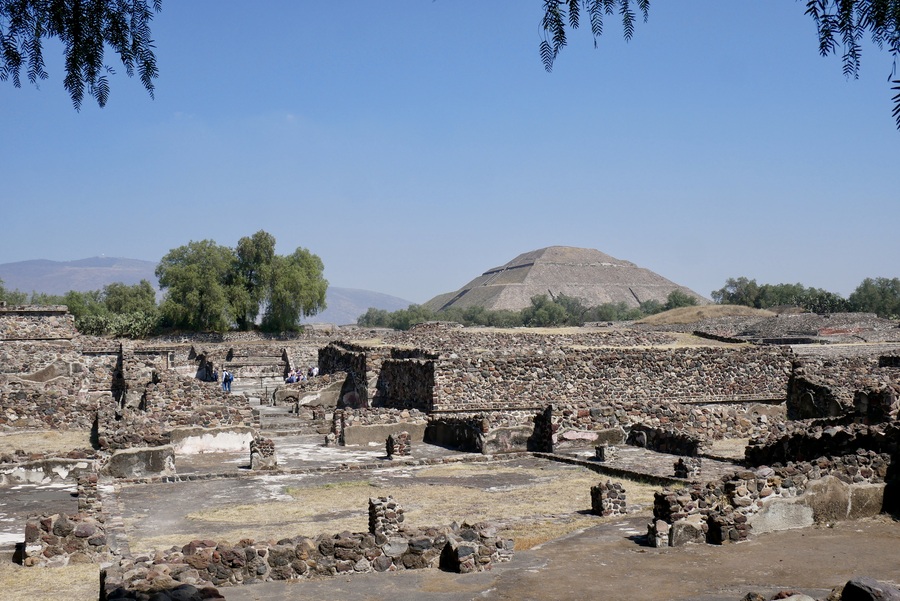
But while many Mexico City weekend itineraries skip the pyramids and focus on sites within town, I consider the temple complex too monumental to skip.
Luckily, Teotihuacán’s ruins are located only an hour from Mexico City’s most popular neighborhoods, so they are quite easy to tour in half a day.
-
Avenue of the Dead
The Avenue of the Dead runs through the heart of Teotihuacán, linking the Pyramid of the Moon with the striking Temple of Quetzacoatl (Temple of the Feathered Serpent). Flanked by twelve temple platforms, the grand avenue is 2.5 miles long.
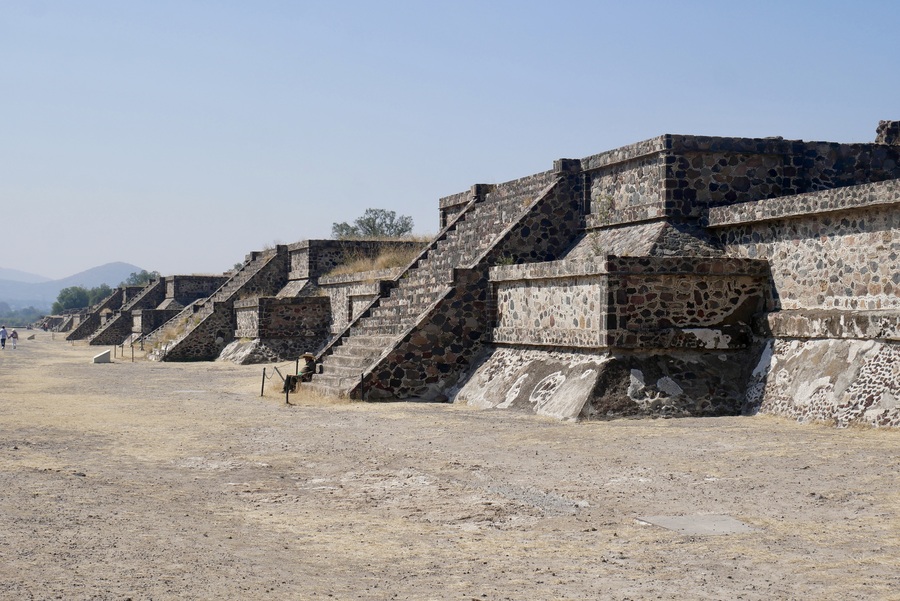
On the eastern side of the avenue, towering above the rest of the complex, sits Teotihuacán’s most impressive monument: the awe-inspiring, 248-stepped Pyramid of the Sun.
The Avenue of the Dead is entirely exposed, so be sure to lather up with sunscreen before strolling down its promenade.
-
Pyramid of the Sun
The Pyramid of the Sun dates back to 100 AD and is one of the largest structures of its type in the Western Hemisphere. It dominates central Teotihuacán, as if standing guard over the archeological site’s main drag.
The massive structure rises 216 feet above ground and measures approximately 720 by 760 feet at its base.
-
Pyramid of the Moon
The Pyramid of the Moon lies at the northern end of Teotihuacán.
Although smaller than the site’s famous Pyramid of the Sun, the Pyramid of the Moon is just as iconic. It stands sentinel over the archeological site, mimicking the outline of Cerro Gordo to its north.
The ritual temple, dedicated to the deity of water, fertility, and creation, was once allegedly used for ceremonial purposes.
-
Additional Sites in Teotihuacán
Teotihuacán houses a number of noteworthy archeological sites that are often overshadowed by its two largest pyramids. The beautifully frescoed Palacio de Quetzalpapálotl is among the area’s other top attractions.
Be sure to also spend a bit of time exploring the Temple of Quetzacoatl that lies opposite the site’s museum and main entrance.
Getting to Teotihuacán from Mexico City
During daylight hours, frequent buses link Teotihuacán with Mexico City’s Terminal Norte. One-way tickets cost M$52. The trip lasts roughly an hour.
Alternatively, if you’re pressed for time, Uber is a quick and reasonably-priced option.
The Historical Center (Centro Histórico)
The historical center of Mexico City boasts the area’s largest concentration of tourist attractions. It is the best place to go to experience the grand scale and immense cultural wealth of CDMX.
Centered around the Zocalo and sitting firmly atop the former capital of the Aztec Empire, the Centro Histórico is the sinking axis upon which the modern city revolves.
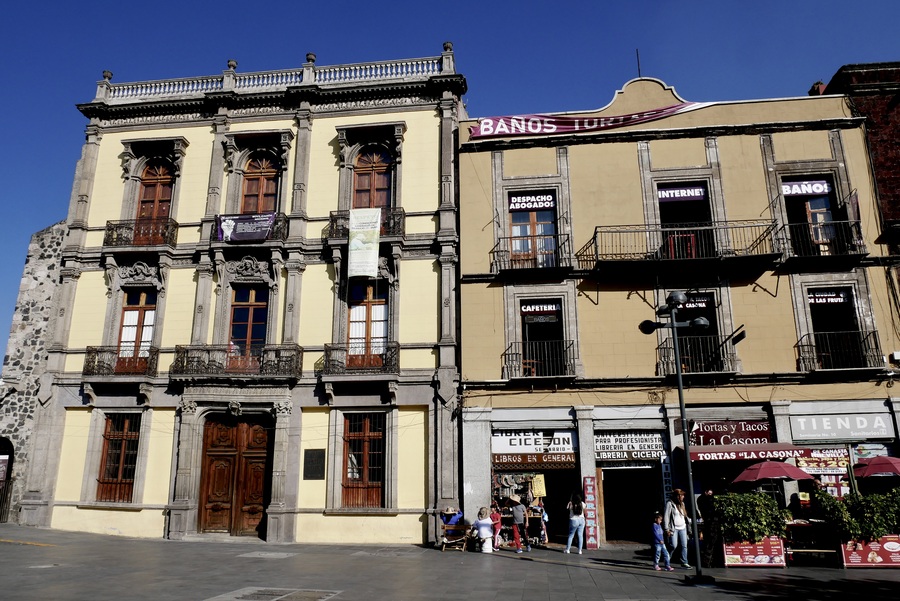
The center of Mexico City is home to ancient Aztec ruins, palaces, plazas, museums, parks, and one of the oldest and grandest Catholic cathedrals in the Americas.
The Zocalo
Mexico City’s enormous main square—known as the Zocalo—anchors many of the city’s top attractions. Measuring 220m from north to south, and 240m from east to west, it’s one of the world’s largest city squares.
The square borders the 16th century Metropolitan Cathedral on its northern perimeter and the Palacio Nacional to the east.
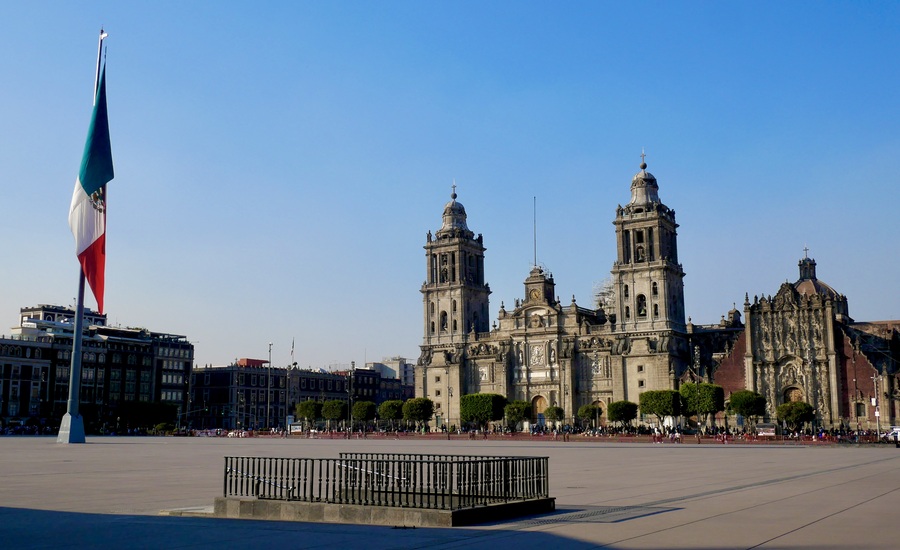
On a previous visit to Mexico City, I recall the Zocalo being a beehive of activity.
During my most recent visit, however, the entire area was cordoned off to prepare for Constitution Day festivities.
Templo Mayor
The Templo Mayor was the main temple of the Aztecs in their capital city of Tenochtitlan, which is now Mexico City. It once rose from the ground where the Metropolitan Cathedral stands today.
In Aztec belief, Tenochitlan’s grand temple signified the center of the universe.
Electrical workers rediscovered the ruins in 1978, after they happened across a massive carving of the Aztec goddess Coyolxauhqui.
Subsequent excavations uncovered other artifacts that now reside in the city’s fabulous Anthropology Museum.
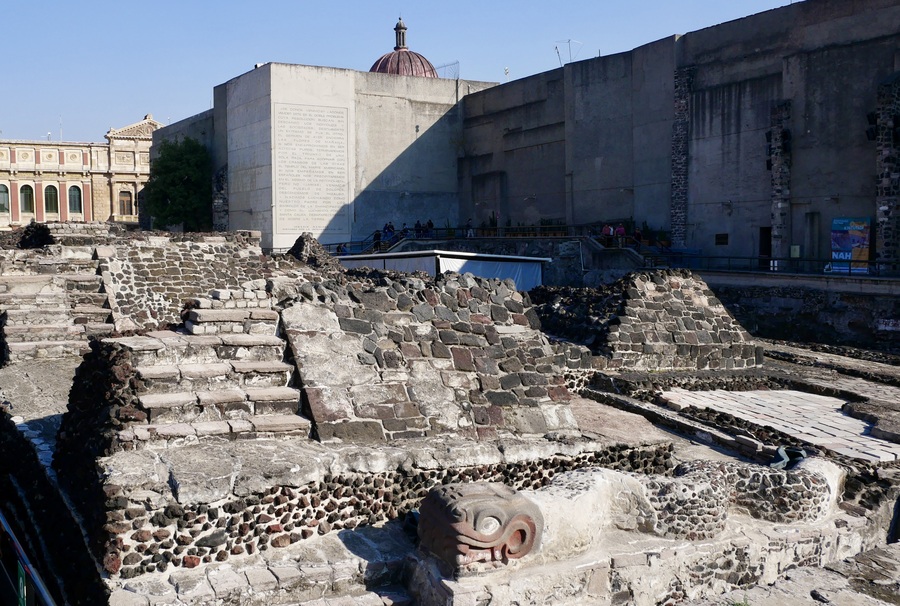
The Templo Mayor entrance lies to the east of the cathedral. Access to its walkways and museum costs $75MX.
However, from boardwalks above the ruins, it is possible to see much of Templo Mayor’s exterior without entering.
Mexico City Cathedral
The Centro Histórico’s monumental cathedral is one of the most renowned attractions in Mexico City.
In a show of domination, the conquistadors ordered the cathedral built atop the Aztec Templo Mayor. Stones from the temple were repurposed for the cathedral’s walls.
The Metropolitan Cathedral was commissioned in 1573 and took 240 years to complete. As a result of its lengthy construction process, the cathedral’s aesthetic contains a full spectrum of architectural styles.
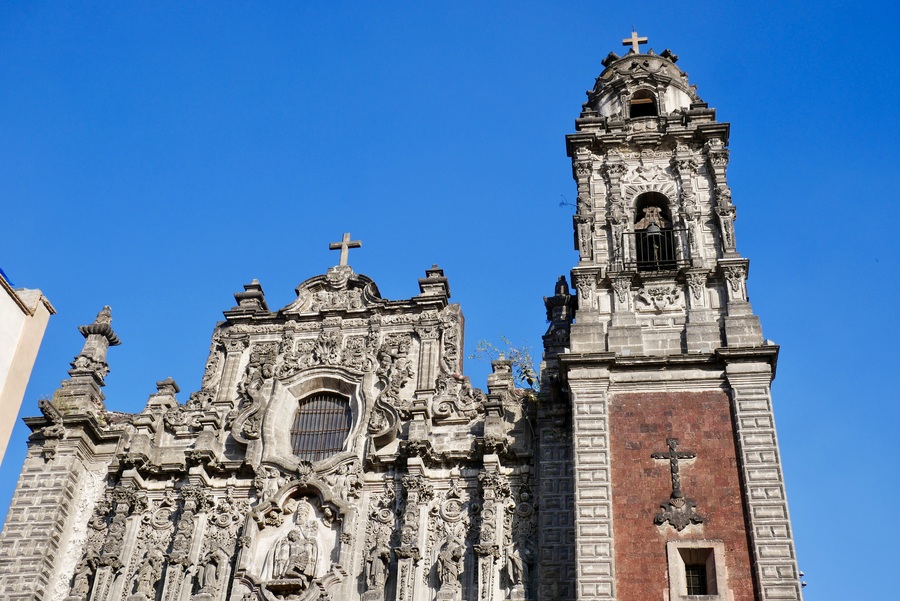
Today, the cathedral appears to be melting into the ground. Because of its construction on top of pre-Hispanic structures (which were themselves built upon soft ground) the Metropolitan Cathedral has been slowly sinking for centuries.
The gradual compression of earth gives the cathedral and many of its surrounding buildings a characteristic lean.
Palacio Nacional
The Palacio Nacional lies at the north end of the Zocalo. A presidential residence, the building has been the seat of government since the arrival of the Spanish in the 16th century.
The National Palace houses famous Diego Rivera murals that depict Mexican civilization from the arrival of Quetzalcóatl to the post-revolutionary period.
The nine murals covering the north and east walls of the palace’s first floor chronicle indigenous life before the Spanish conquest.
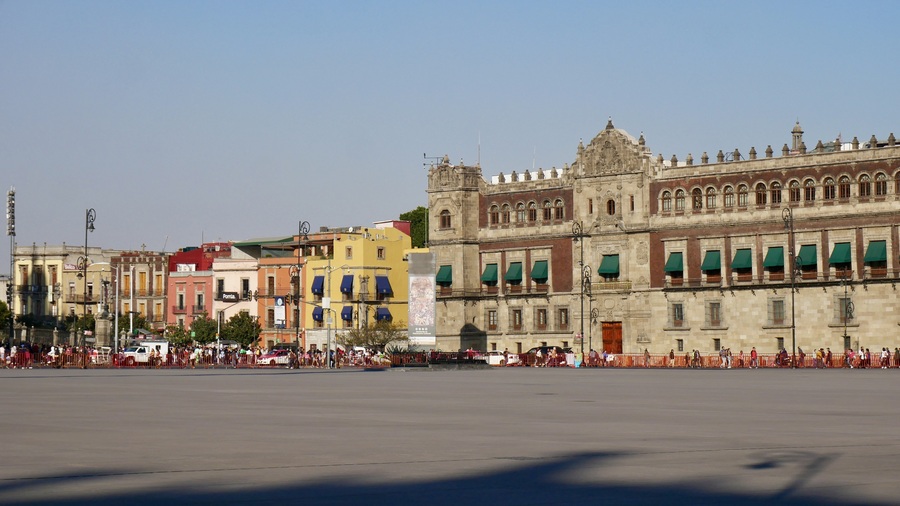
Diego Rivera’s murals are among the top things to see in Mexico City.
Admission to the Palacio Nacional is free, though you’re required to bring a passport and show your ID.
Unfortunately, the National Palace was closed during our visit.
Palacio de Bellas Artes
The Palacio de Bellas Artes is a neoclassical and art nouveau masterpiece designed by Italian architect Adamo Boari. It lies at the eastern edge of the Alameda Central, Mexico City’s oldest municipal park.
Construction of Bellas Artes took decades to complete, in part thanks to the area’s spongey subsoil. As with many other buildings around the city’s core, the palace’s marble exterior began sinking into the ground after construction.
Architect Federico Mariscal eventually finished the interior in the 1930s, utilizing the more modern art deco style. With art nouveau on the outside and art deco on the inside, the Palacio de Bellas Artes is considered one of the most spectacular 20th century buildings in the Americas.
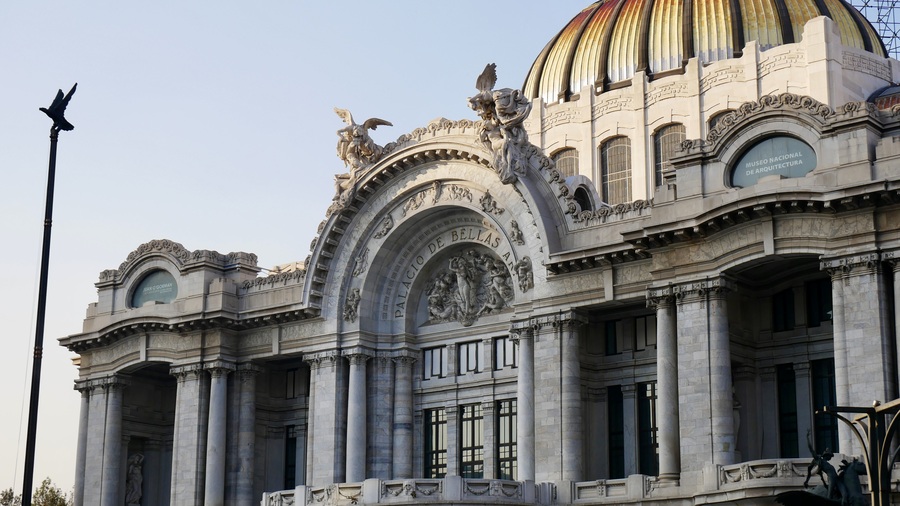
Bellas Artes features murals by Diego Rivera and Jose Clemente Orozco, among others. It is also home to the National Museum of Architecture and the National Theater.
Entrance to the palace’s lobby is free, while access to its exhibits costs $70MX.
Day 2: Museums and Waterways
With only two days in Mexico City, you’ll have to make some tough choices. There are simply too many things to pack into a short weekend itinerary.
Dan and I wanted to focus on the city’s ancient history, so we chose to divide our time between the Xochimilco Canals and the incredible Museum of Anthropology.
If your interests lie elsewhere, you might want to focus on the Diego Rivera murals, the Frida Kahlo Museum, or the Luis Barragan houses instead.
All are good choices. You really can’t go wrong.
Xochimilco Floating Gardens
Xochimilco, dubbed “the Venice of Mexico,” is a Unesco World Heritage Site that preserves a pre-Hispanic method of agriculture and farming.
With its colorful trajineras (tourist boats) and its traditional floating gardens called chinampas, a tour around the Xochimilco Canals is truly unforgettable.
If you have three days in Mexico City, you can easily combine a visit to the Xochimilco Canals with stops at Frida Kahlo’s Casa Azul and the nearby Cayoacan neighborhood.
The Chinampas
Xochimilco is central to the history of Mexico City. A UNESCO World Heritage Site, the agricultural area dates back to Aztec times. Its characteristic human-engineered floating farms, first constructed in the 1300s and still in use today, have been preserved in an exceptional manner.
Historically, Xochimilco was a lake where the Aztecs started building manmade chinampas (artificial fields) for agricultural purposes. These chinampas consist of layered manmade “rafts.” When a raft began to sink, farmers tied another layer on to the same location, in a continual cycle.
With its network of canals and artificial islands, Xochimilco illustrates the ways in which the Aztecs were able to build a thriving civilization atop wetlands.
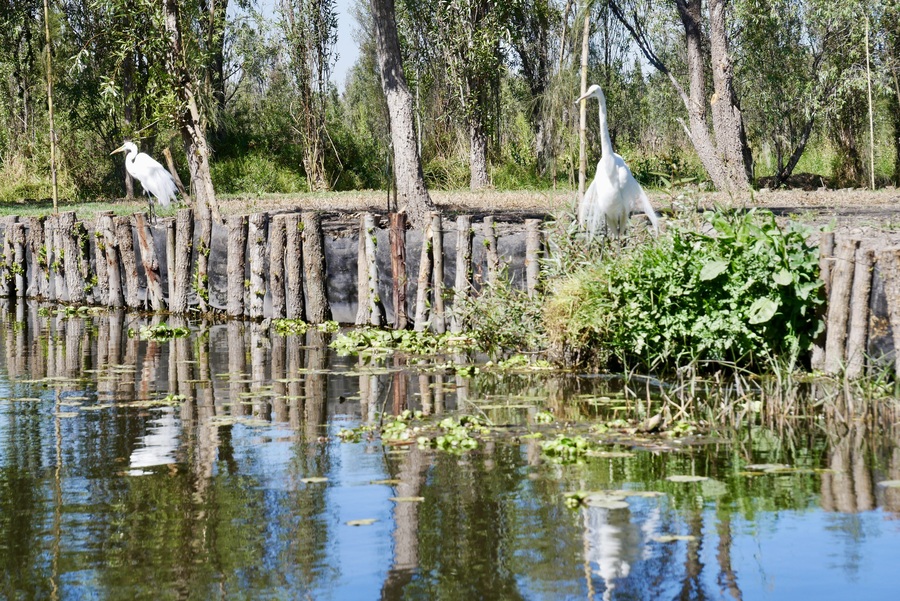
While most people choose to visit Xochimilco on colorful party boats called “trajineras”, Dan and I joined an AirBnb experience that gave us a more intimate glimpse into the area.
Our morning tour of the Xochimilco Canals included a canoe adventure through the gentle waterways, followed by lunch on a working farm. It allowed us to explore areas of the World Heritage Site that are only accessible by small boat (trajineras must stick to the main canal).
Led by a biologist-turned-guide who was passionate about preserving the site for future generations, the tour was truly a highlight of our Mexico City itinerary.
Museum of Anthropology
Visiting Mexico City without setting foot in the Museum of Anthopology is like traveling to Cairo and skipping the Egyptian Museum. Or visiting Athens and bypassing the Acropolis Museum.
Unless you’re really not a museum person, I highly suggest you carve out some time to learn about Mexico’s history from past to present.
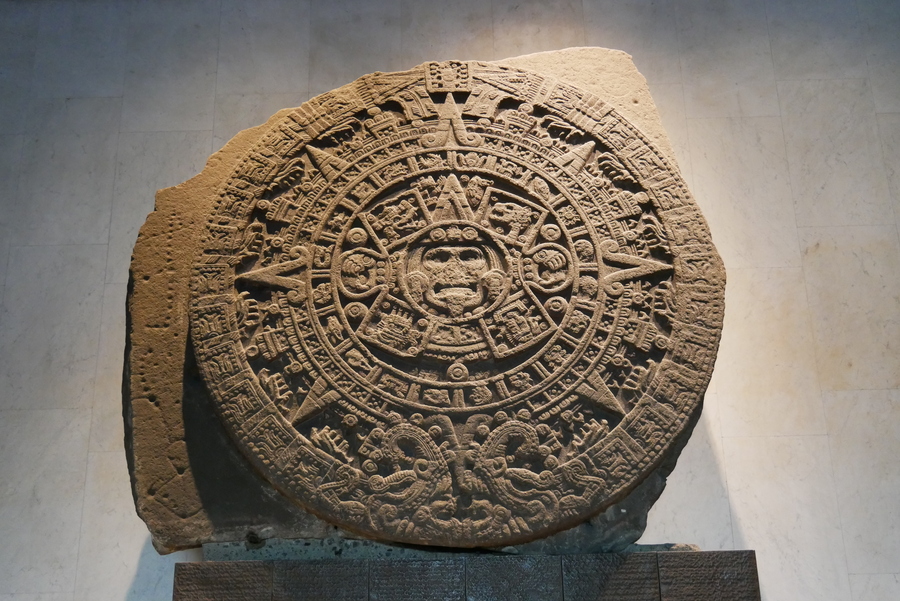
The Museum of Anthropology stands at the edge of Chapultepec Park. It houses some of the country’s most precious relics and offers an unparalleled opportunity to learn about Mesoamerican civilization.
The museum’s twelve ground-floor halls are dedicated to pre-Hispanic Mexico, while upper-level rooms showcase the country’s contemporary civilization.
The vast museum offers more than most people can absorb in a single visit.
But with a few hours to explore, we—like most visitors to the museum—focused on the Teotihuacan, Aztec and Maya exhibits.
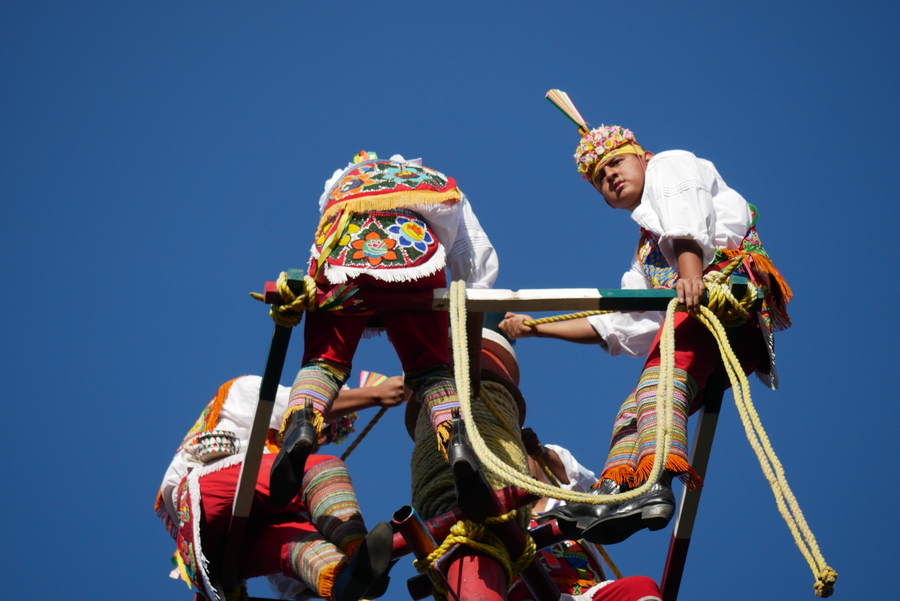
In a clearing near the entrance to the museum, you’ll be able to watch indigenous Totonac people perform their spectacular voladores rite for tips.
Chapultepec Park
Mexico City’s Chapultepec Park is the largest and oldest urban park in Latin America. For centuries, it has served as a refuge from the hustle and bustle of the city.
At the park’s eastern entrance, the stately Chapultepec Castle stands as a visual reminder of the city’s aristocracy.
The park is a huge green oasis. In addition to a castle, it contains nine museums, a zoo, an amusement park, a small lake, and a network of walking trails.
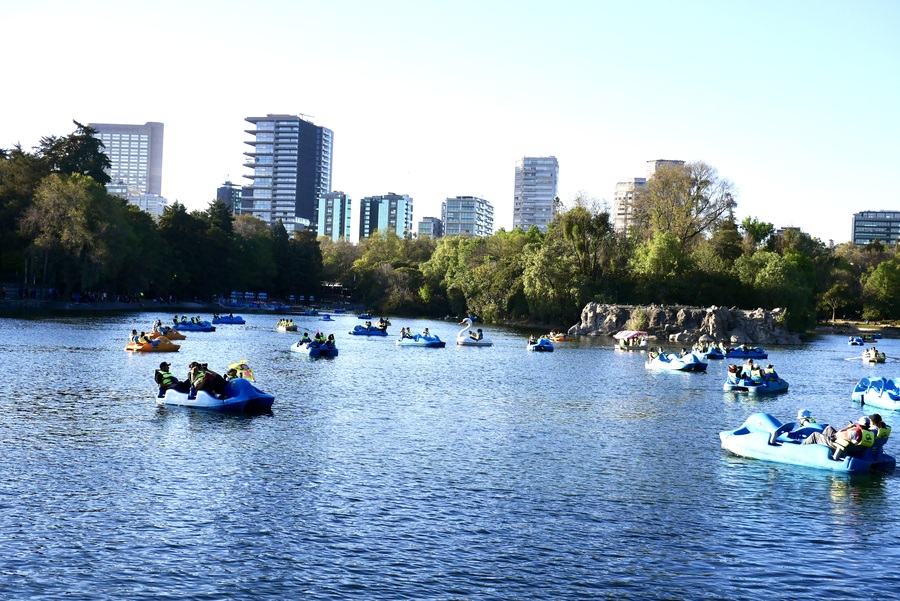
The park is a tranquil escape from the city’s chaos and congestion and a great place to spend a sunny afternoon.
Mexico City’s Neighborhoods
While many of the top things to do in Mexico City lie scattered about the massive urban area, some of its best neighborhoods are located one after another, in close succession. These neighborhoods—Condesa, Roma, and Polanco—are trendy, safe, and aesthetically beautiful. They have thriving nightlife, overflow with tasty eateries, and house many of the city’s top hotels.
Condesa
Among the most fashionable neighborhoods in CDMX, Condesa attracts locals and travelers with its pretty tree-lined avenues and chic hangouts.
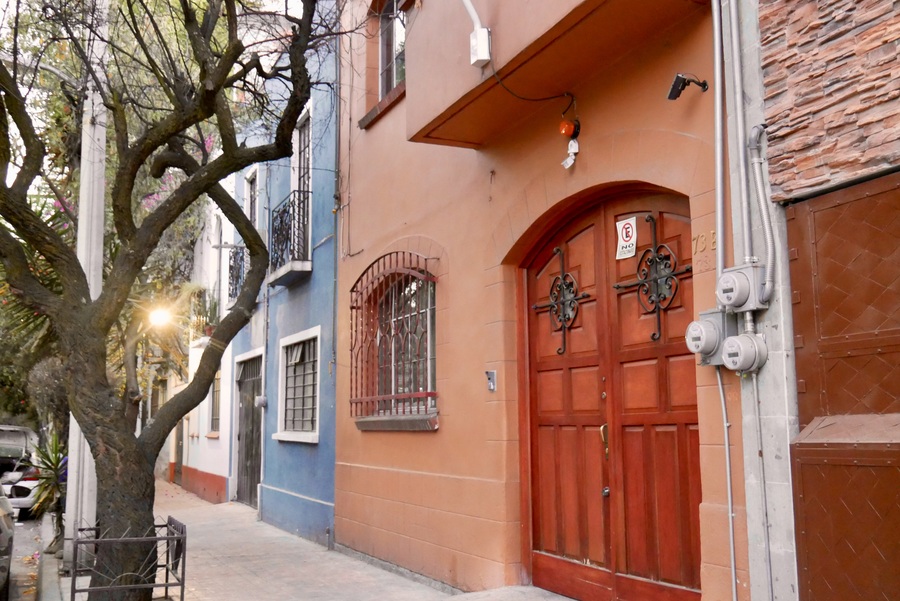
The area boasts a cosmopolitan vibe with beautiful parks, designer boutiques, fantastic gastronomy offerings, and a vibrant nightlife. It is little wonder why many travelers choose to use Condesa as their base when traveling around the Mexican capital.
Roma
Slightly grittier yet still chic, Roma Norte lies near Condesa and the Centro Historico. The area—full of trendy cafes, outdoor eateries and plenty of street art—is quickly becoming one of Mexico City’s coolest neighborhoods.
Colorful Roma is the hipster heart of Mexico City. It is the perfect place to stay if you’re looking to enjoy close proximity to many of Mexico City’s biggest attractions.
Polanco
A wealthy residential neighborhood northwest of downtown, Polanco was originally built up in the 1930s.
Today, the upscale neighborhood is best known for its art galleries, luxury shopping malls, and high-end dining. Many of the top restaurants in Mexico City can be found in Polanco.
The day we got into town, we ate at Entremar and had a fantastic seafood dinner. Aside from a short walk through the neighborhood in the evening, however, we didn’t get much of a chance to explore.
Additional Things to Do in Mexico City
Though I enjoyed two jam-packed days of sightseeing in Mexico City, I had nowhere near the adequate amount of time to explore all of the city’s top attractions.
With additional days, the Frida Kahlo House and the Luis Barragan Houses would have been my top priorities.
-
Frida Kahlo House
Museo Frida Kahlo is a historic house and art museum dedicated to the life and works of Mexico’s most iconic artist. Located within Kahlo’s birthplace, the cerulean blue house contains artifacts and artwork throughout its rooms. The house itself, however, is maintained to look much like it did in the 1950s.
Tickets to the Frida Kahlo House cost $250MX Monday-Friday and $270MX on the weekends. You can buy tickets either at the museum or online in advance.
I’ve heard that the line can be quite long if you choose to purchase tickets on arrival, however.
-
Luis Barragan Houses
Casa Luis Barragán, built in 1948, represents one of Latin America’s most noteworthy examples of contemporary architecture. Inscribed as a World Heritage Site by UNESCO in 2004, it is the only individual property in Latin America to have achieved such an honor.
Since I couldn’t secure tickets in time, I didn’t visit the interior of Casa Barragán.
However, on my next trip to Mexico City, visiting the Barragán House will be at the top of my to-do list.
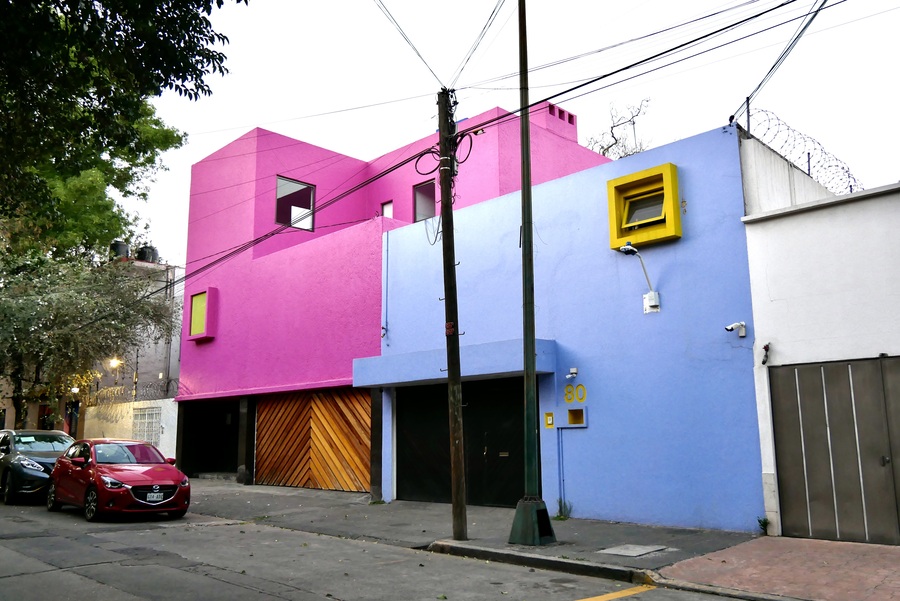
In addition to Casa Barragán, the famous architect has designed a handful of other properties around the city. These include Casa Gilardi, Casa Ortega, Cuadra San Cristobal, Casa Pedregal, and the Chapel and Convent of the Capuchinas Sacramentarias.
If you plan on visiting any of the Luis Barragán properties, be sure to reserve your tickets in advance.
Best Places to Stay in Mexico City
During our trip to Mexico City, Dan and I stayed in Condesa, at the LaiLa Hotel. Though not as trendy or artsy as some of the other boutique offerings in town, the hotel was clean, centrally located, and affordable.
Backpackers and solo travelers can find cheap dorm beds at the funky Hostel Home in Roma. Viajero CDMX in the Zona Central is another option that won’t break the bank and offers private rooms.
At a mid-range price point, the Red Tree House and Casa Mali by Dominion both have clean stylish rooms and fantastic locations in Condesa.
Casa Luciana receives rave reviews as well. It has a relaxing garden and beautifully appointed rooms.
In the upscale Polanco neighborhood, you’ll find some of the city’s more luxurious offerings. Las Alcobas Luxury Hotel boasts a spa, spacious rooms, and terrace views. It is among the best hotels in Mexico City.
Getting Around Mexico City
To get around CDMX, we relied on a mixture of Uber and our own two feet.
Uber is ubiquitous in Mexico City. If you’re pressed for time, it provides a great way of getting from place to place. Most Uber rides within the city cost us less than $10. Even getting from Condesa to the Teotihuacan Pyramids only set us back around $20.
Taxis are another relatively hassle-free way of getting around, though they cost a little more than rideshares.
If you’re sticking to a tight budget or have extra time to spare, you can get to most touristy place in Mexico City using public transportation. Mexico City’s subway system is cheap, clean, and fairly safe.
Safety in Mexico City
By and large, people have the wrong idea about Mexico City. For many, the name alone summons two words: crime and pollution.
As with many big cities, your level of risk will depend on the areas you visit. If you stick to the popular neighborhoods and keep aware of your surroundings, chances are that you’ll be fine.
Polanco, Condesa, and Roma are the safest neighborhoods in Mexico City. Centro is still safe, but the high concentration of tourists makes pickpockets a bigger threat.
In general, if you want to avoid the areas with the highest crime rates, you’ll want to steer clear of Tepito, Doctores, Ciudad Neza, and Iztapalapa.
When to Visit Mexico City
Mexico City is a year-round destination with mild weather. The best time to visit Mexico City is in the springtime, between March and May. Springtime brings beautiful weather and sunny skies. Daytime temperature typically hover around the high 70s.
Summer is the rainiest time to visit Mexico City, while winter is the chilliest. Though not as ideal as springtime, both times of year are perfectly suitable for travel. You may encounter reduced rates, too.
We visited Mexico City for a weekend in February and encountered near-perfect weather.
Mexico City Food Scene
Mexico City is a foodie heaven. Whether you’re dining at a Michelin restaurant or grabbing a quick bite at a neighborhood taco stand, you don’t have to look far to find delicious eats.
The food on our trip to Mexico City was phenomenal from start to finish.
On the day we arrived, we ate at Entremar (a sister restaurant to the more famous Contramar). Entremar’s menu is the same as that of Contramar. Its tuna tostadas are simply divine.
Other famous restaurants in Mexico City include Pujol (ranked perpetually among the top 50 eateries worldwide) and Quintonil (a high-end spot with some of the best food in the country). I personally didn’t have the chance to eat at either.
Mexico City isn’t all about fancy food though. Make sure you save room in your stomach for al pastor street tacos. And churros from Churreria El Morro. And pretty much everything else you can get your hands on.
*****
Mexico City is having a moment in the spotlight. In recent years it has become a magnet for lovers of culture and history.
If you don’t let its reputation for crime and pollution scare you away, the sprawling metropolis is sure to win you over. It is alive and thriving—with pulsing energy, world-class architecture, ancient history, and tantalizing food.
With only a weekend to explore CDMX, try to soak in all there is to see.
But I’ll warn you in advance: there’s so much to do in Mexico City that you’ll probably want to plan a return visit within minutes of leaving.
_________________________
DID YOU ENJOY THIS MEXICO CITY ITINERARY AND GUIDE? PIN IT!
